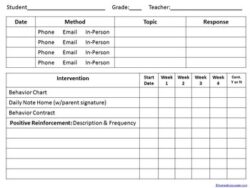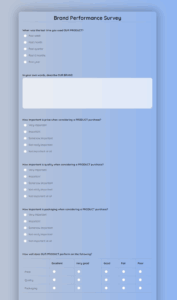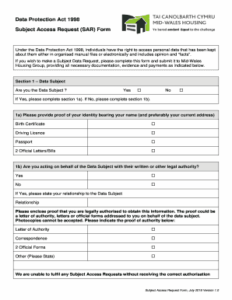Understanding how people interact with social media platforms is no longer just a nice-to-have; it’s a critical component for anyone aiming to connect with their audience effectively. Whether you’re a business trying to refine your marketing strategy, a researcher studying digital behavior, or an educator looking to understand student habits, getting insights directly from users is invaluable. This direct feedback helps you tailor your content, products, or services to truly resonate with the people you want to reach.
However, creating a comprehensive survey from scratch can be a daunting task. There are so many questions you could ask, and knowing which ones are most important can be tricky. That’s where a well-designed social media usage survey template comes into play, offering a structured starting point that saves you time and ensures you cover all the essential bases to gather meaningful data.
Why Uncovering Social Media Habits is Essential
Delving into the specifics of how individuals use social media provides a wealth of information that can drive smarter decisions across various sectors. For businesses, this data illuminates customer preferences, helping to shape more engaging content strategies, pinpoint the most effective advertising channels, and even identify new product development opportunities. Researchers gain deeper insights into societal trends, communication patterns, and the psychological impacts of digital interaction. Educators can better understand how students are consuming information and engaging with online learning environments, adapting their methods to fit contemporary digital realities.
Beyond surface-level engagement metrics, a detailed survey allows you to understand the “why” behind user actions. Why do they prefer one platform over another? What kind of content do they seek out? What are their biggest frustrations or desires when it comes to social media? This qualitative and quantitative data paints a richer picture than analytics alone ever could, helping you to move from assumptions to informed strategies.
Consider the dynamic nature of social media itself. Platforms evolve, new features emerge, and user demographics shift constantly. Without regular check-ins through surveys, your understanding can quickly become outdated. A structured social media usage survey template becomes a living document, a tool you can adapt and reuse to keep a pulse on these changes, ensuring your strategies remain relevant and effective over time.
This continuous feedback loop empowers you to iterate and improve. Imagine launching a new campaign based on the insights from your survey, then conducting another survey a few months later to gauge its impact. This iterative approach fosters a cycle of learning and optimization that is crucial in the fast-paced digital world.
Key Areas Your Social Media Survey Should Cover
- Demographics of Users: Age, gender, location, occupation, and other relevant demographic data help segment your audience.
- Preferred Platforms and Usage Frequency: Which platforms do they use most often, and how much time do they spend on each daily or weekly?
- Content Preferences: What types of content do they engage with (e.g., videos, articles, stories, live streams) and on which platforms?
- Purpose of Use: Why do they use social media (e.g., entertainment, news, connecting with friends, professional networking, shopping)?
- Interaction Habits: How do they interact with brands, businesses, or content creators? Do they prefer comments, likes, shares, or direct messages?
- Privacy Concerns and Trust: What are their concerns regarding data privacy, and how much trust do they place in different platforms?
- Impact on Daily Life: How do they feel social media impacts their well-being, productivity, or relationships?
Crafting Your Ideal Social Media Usage Survey Template
When you’re ready to put together your own social media usage survey template, think about clarity and purpose. Each question should have a clear goal: what specific piece of information are you hoping to uncover? Avoid jargon and ensure that your questions are easy to understand for everyone, regardless of their technical proficiency. A well-constructed survey feels intuitive and doesn’t overwhelm the respondent. Remember, the easier it is to complete, the higher your response rate will likely be.
Consider the flow of your survey. Start with general questions that ease respondents in, perhaps about their overall social media habits, before moving into more specific or sensitive topics like privacy concerns or detailed content preferences. Grouping similar questions together can also help maintain a logical progression, making the survey experience smoother and more enjoyable for participants. This thoughtful arrangement reflects a professional approach and respects the time of your respondents.
Varying your question types can also keep respondents engaged. Mix multiple-choice questions for quick, quantifiable data with Likert scales for measuring attitudes or agreement, and open-ended questions to capture nuanced qualitative insights. While open-ended questions require more effort to analyze, they often provide invaluable context and unexpected perspectives that closed-ended questions simply cannot capture. A balanced mix ensures you get both the broad strokes and the intricate details.
Finally, think about how you’ll distribute and analyze the results from your social media usage survey template. Choosing the right survey platform, whether it’s a free tool or a more robust paid service, can significantly impact your ability to collect, organize, and interpret the data efficiently. Having a plan for analysis before you even launch your survey will help you design questions that yield actionable insights, allowing you to move from data collection to strategic implementation seamlessly.
Leveraging a robust social media usage survey template empowers you to gather rich, actionable insights that can profoundly shape your understanding of your audience and the digital landscape. By taking a systematic approach to asking the right questions, you unlock a deeper understanding of user behavior and preferences, allowing you to refine your strategies with precision and confidence.
The journey of truly understanding your audience is ongoing, but with the right tools and a commitment to listening, you can continuously adapt and thrive in the ever-evolving world of digital communication. The insights gleaned from a well-executed survey pave the way for more meaningful connections and more effective digital presence.



